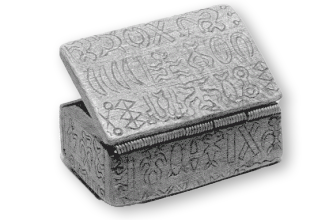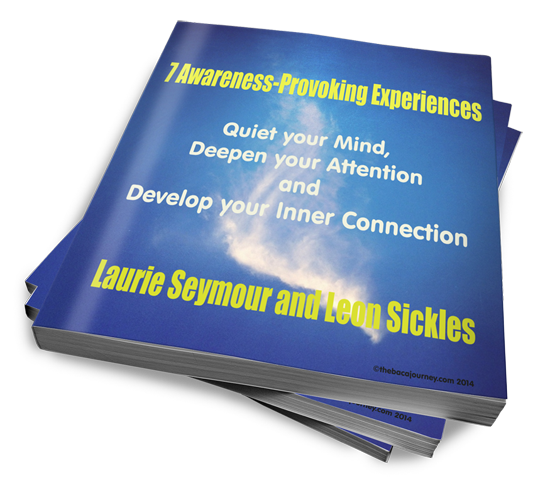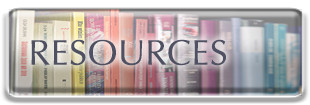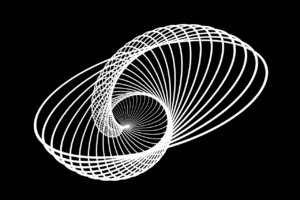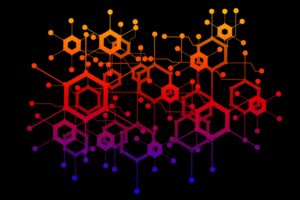Explore the library of Baca Institute resources
Hand selected to nourish and enrich you
-
Taoist Meditation: 8 Taoist Meditation Techniques For Inspiration And Inner Peace Discover everything you need to know including techniques, exercises and Tao prayers to expand your practice.
-
38+ People Comment On The Benefits Meditation Has Brought Them This is a collection of stories and comments people have sent us on the wonderful benefits meditation has brought them, published with the hope of inspiring YOU to try meditation for the first time (or pick it up again if you’ve just been lazy with it ???? ).
-
11 Simple But Effective Ways to Teach Mindfulness to Kids: Great suggestions on ways to be with your children (and good for you, too!).
- How to Improve Concentration and Focus in Your Life: Tips to improve concentration and focus in your daily living. It also includes some unusual exercises from an 20th century book called, The Power of Concentration.
- 76 Benefits of Meditation: This is a useful and fascinating article on meditation that includes references to the many studies that have shown meditation’s value and benefit to our health and well-being. Scientific benefits of meditation – 76 things you might be missing out.” We all have heard that “meditation is good for you”. But good in what terms? Is that just reports from people doing it for 10 years, or are there good scientific studies showing specific benefits that I care about? The author has summarized several scientific discoveries on the benefits of meditation. Over 100 studies were analysed (some of which were already analysis of other hundreds of studies), and categorized the findings into 76 benefits (divided into 46 subheadings)
- ABC-of-Meditation is a meditation information and news portal with articles on meditation basics, background, postures and techniques.
- Breathworks: Meditation and pain management
- Caring Awareness has Buddhist meditations to help release and reduce stress as well as a community section with over 150 free Dharma talks and meditations.
- Clear Vision: Online resources for meditation (and Buddhism) for young people and schools.
- Curt Remington Meditation Resources
- Gaiam: Meditation and yoga courses
- Alternative-medicine: How to meditate has instructions in mantra meditation.
- Buddhanet: Meditation eBook by David Smith (PDF, 948kb)
- Meditation is easy is an Indian website with some very useful tips on meditation.
- Meditation Station an excellent site teaching many meditation techniques.
- Mindfulness in Action offers Mindfulness-Based Stress Reduction workshops, as well as mindfulness training and workshops for individuals and organizations.
- Mindfulness.org.au
A site is designed to assist people who are interested in the integration of psychotherapy and medical therapies, for their own well-being, for the purpose of enhancing the therapeutic relationship or to improve the quality of clinical interventions. - Relaxation reviews is an independent guide to relaxation tapes, CDs, MP3s & online relaxation audio.
- Vipassana meditation website one of the most widespread forms of meditation practice
- World Wide Online Meditation Center” A user-friendly site, created to provide clear, straight-forward meditation instruction to people anywhere on the planet.
Cole-Whitaker’s innovative methods for human resource development, self-motivation and personal growth are available here in this book. Readers can learn to cope with physical, mental and spiritual problems involving love, money, guilt, self-image, sexuality, relationships and more.
Power vs. Force: The Hidden Determinants of Human Behavior by Dr. David Hawkins
Dr. Hawkins’s basic thesis focuses on the “Ultimate Presence” – the source from which individuals can reach their highest potential. He uses theoretical concepts from particle physics, nonlinear dynamics, and chaos theory to support his study of human behavior.
Part 1 describes the process of moving toward one’s ultimate potential. Dr. Hawkins then discusses his theory by explaining the progression from negative energy fields or attractors to positive attractors, which ultimately lead to pure consciousness. Based on 20 years of research, he has developed an intriguing Map of Consciousness that, in essence, charts one’s spiritual growth.
Science and the Akashic Field: An Integral Theory of Everything by Ervin Laszlo
Mystics and sages have long maintained that there exists an interconnecting cosmic field at the roots of reality that conserves and conveys information, a field known as the Akashic record. Recent discoveries in vacuum physics show that this Akashic Field is real and has its equivalent in science’s zero-point field that underlies space itself. This field consists of a subtle sea of fluctuating energies from which all things arise: atoms and galaxies, stars and planets, living beings, and even consciousness. This zero-point Akashic Field is the constant and enduring memory of the universe. It holds the record of all that has happened on Earth and in the cosmos and relates it to all that is yet to happen.
The Biology of Transcendence: A Blueprint of the Human Spirit by Joseph Chilton Pearce
Why do we seem stuck in a culture of violence and injustice? How is it that we can recognize the transcendent ideal represented by figures such as Jesus, Lao-tzu, and many others who have walked among us and yet not seem to reach the same state?
Chilton Pearce examines the current biological understanding of our neural organization to address how we can go beyond the limitations and constraints of our current capacities of body and mind–how we can transcend. Recent research in the neurosciences and neurocardiology identifies the four neural centers of our brain and indicates that a fifth such center is located in the heart. This research reveals that the evolutionary structure of our brain and its dynamic interactions with our heart are designed by nature to reach beyond our current evolutionary capacities. We are quite literally, made to transcend. (Italics: TBJ)
Einstein’s God: Conversations About Science and the Human Spirit, by Krista Tippett
Tippett describes religion and science as “pursuits of cohesive knowledge and underlying truths” and seeks to dispel the erroneous assumption that these two realms of inquiry are in opposition. Tippett looks to Einstein’s “self-described ‘cosmic religious sense’” as a key example of how spiritual insights deepen the resonance of scientific discoveries and vice versa.
Turning the Mind into an Ally by Sakhong Mipham
The key to peaceful and sane living, says Mipham, is training our minds. Without that training, people live “at the mercy of our moods.” Meditation is the tool that can help spiritual seekers master, rather than be mastered by, their own minds. This book blends a philosophically savvy explanation of why meditation is necessary with an artful and accessible introduction to the basics of meditation. From Publisher’s Weekly
Crossing the Unknown Sea: Work as a Pilgrimage of Identity by David Whyte
Readers who accept poet and Fortune 500 consultant Whyte’s invitation to enter into “an imaginative conversation about life and work” are likely to be challenged as well as delighted by the beauty of his writing and the expansiveness of his views. Gracefully using the metaphor of a sea voyage to depict the journey through the world of work, Whyte views work not only as a means of support, but as a means for interacting with the world and developing self-expression and identity. While he draws on the philosophical underpinnings of the self-help movement aimed at finding one’s “inner compass,” Whyte doesn’t offer the step-by-step pragmatism of other books. Instead, his approach is subtler and more organic, presenting an abundance of provocative ideas, especially on one’s relationship with time and daily ritual, on the importance of dignity and ethics and on honoring the labor of one’s ancestors. From Publisher’s Weekly
Revolution in Consciousness by Frédéric Lionel
Frédéric Lionel was a teacher of the Western Mystery Tradition. He felt that only a revolution in consciousness, enabling us to achieve a deep apprehension of the problems of our time, would provide hope for a new era which will see a blending of scientific progress with Eternal Wisdom. “Self-knowledge leads to mastery, since it means penetration into the depths of the unconscious which contains the quintessence of evolutionary experience. The up-surge of self-knowledge is synonymous with an awakening or, as the alchemists would say, with the ‘gift of God’.” (Out of Print)
Downward Causation and the Neurobiology of Free Will (Understanding Complex Systems) edited by Nancy Murphy, George F.R. Ellis, and Timothy O’Connor
Springer, 2009
From: John Templeton Foundation
How is free will possible in light of the physical and chemical underpinnings of brain activity and recent neurobiological experiments? How can the emergence of complexity in hierarchical systems such as the brain, based at the lower levels in physical interactions, lead to something like genuine free will? A key tool in understanding how free will may arise in this context is the idea of downward causation in complex systems, happening coterminously with bottom up causation, to form an integral whole.
The Re-Emergence of Emergence: The Emergentist Hypothesis from Science to Religion edited by Philip Clayton and Paul Davies
Oxford University Press, 2006
This collection of essays debates the perplexing question of whether, and if so how, consciousness emerges from the functioning of the brain. It contains the work both of leading proponents of emergence theory and some of its outspoken critics. The Emergent Reality Symposium was chaired by Paul Davies.
Many Worlds: The New Universe, Extraterrestrial Life & the Theological Implications edited by Steven Dick
Templeton Press, 2000
In this book, renowned scientists in fields from physics to astronomy discuss the possibility of a cosmic evolutionary process that guides not only our universe, but other planets and universes as well. The Many Worlds Symposium was chaired by Paul Davies.
Authentic Happiness: Using the New Positive Psychology to Realize Your Potential for Lasting Fulfillment by Martin E.P. Seligman
(Paperback) The Free Press, 2004 / (Hardcover) The Free Press, 2002
Martin Seligman introduces the revolutionary, scientific idea of “positive psychology,” which focuses on strengths rather than weaknesses, asserting that happiness is not the result of good genes or luck. The Evolution Purpose and Meaning Symposium was chaired by Robert Wright.
Books by Mihaly Csikszentmihaly
Creativity: Flow and the Psychology of Discovery and Invention
Flow: The Classic Work on How to Achieve Happiness, by Mihaly Csikszentmihaly
Flow: The Psychology of Optimal Experience, by Mihaly Csikszentmihaly
Finding Flow: The Psychology of Engagement with Everyday Life, by Mihaly Csikszentmihaly
Mihaly Csikszentmihalyi’s investigations of “optimal experience” have revealed that what makes an experience genuinely satisfying is a state of consciousness called flow. During flow, people typically experience deep enjoyment, creativity, and a total involvement with life.
“I discovered ‘flow’ in my PhD program. In the quieter moments, I became aware of ‘flow’ as a state of being that was engaging with me and my research so that we could conspire together. How honest is this pursuit! Although surrealistic in the face of uncertainty in life, ‘flow’ is precisely what has opened me up to the invisible workmanship of faith.” –Yvonne P.
Where not otherwise noted, descriptions from Amazon.com
Daydream Voyages: For inspiration to follow your heart… For travel and retreat ideas…
NPR’s The Science of Spirituality: This is a special series, which includes:
- “Is This Your Brain on God?”More than half of adult Americans report that a spiritual experience has changed their lives.
- “Decoding the Mystery of Near-Death Experiences.” Some researchers are exploring whether a mind can operate while the brain has stopped. One neuroscientist says that after a near-death experience, people’s brains appear to undergo changes at the neural level.
- “Prayer May Reshape Your Brain and Your Reality.” Scans show that people who spend untold hours in prayer or meditation go dark in the parietal lobe, the brain area that helps create a sense of self. A researcher says these people may be rewriting the neural connections in their brains — altering how they see the world.
- And more!
John Templeton Foundation Humble Approach Initiative: The John Templeton Foundation serves as a philanthropic catalyst for discoveries relating to the Big Questions of human purpose and ultimate reality. We support research on subjects ranging from complexity, evolution, and infinity to creativity, forgiveness, love, and free will. We encourage civil, informed dialogue among scientists, philosophers, and theologians and between such experts and the public at large, for the purposes of definitional clarity and new insights.
Our vision is derived from the late Sir John Templeton’s optimism about the possibility of acquiring “new spiritual information” and from his commitment to rigorous scientific research and related scholarship. The Foundation’s motto, “How little we know, how eager to learn,” exemplifies our support for open-minded inquiry and our hope for advancing human progress through breakthrough discoveries.
Sizing Up Consciousness by Its Bits: From NYTimes.com
One day in 2007, Dr. Giulio Tononi lay on a hospital stretcher as an anesthesiologist prepared him for surgery. For Dr. Tononi, it was a moment of intellectual exhilaration. He is a distinguished chair in consciousness science at the University of Wisconsin, and for much of his life he has been developing a theory of consciousness. Lying in the hospital, Dr. Tononi finally had a chance to become his own experiment…
When the Mind Wanders, Happiness Also Strays: A quick experiment. Before proceeding to the next paragraph, let your mind wander wherever it wants to go. Close your eyes for a few seconds, starting … now.
And now, welcome back for the hypothesis of our experiment: Wherever your mind went — the South Seas, your job, your lunch, your unpaid bills — that daydreaming is not likely to make you as happy as focusing intensely on the rest of this column will.
I’m not sure I believe this prediction, but I can assure you it is based on an enormous amount of daydreaming cataloged in the current issue of Science. Using an iPhone app called trackyourhappiness, psychologists at Harvard contacted people around the world at random intervals to ask how they were feeling, what they were doing and what they were thinking.
The least surprising finding, based on a quarter-million responses from more than 2,200 people, was that the happiest people in the world were the ones in the midst of enjoying sex. Or at least they were enjoying it until the iPhone interrupted…
New Meditation Research: Putting the \’Om in Chromosome: The Shambhala Mountain Center sits nestled among the remote lakes and pastures of Colorado’s Rocky Mountains, where for four decades it has offered instruction and retreat to serious students of meditation and yoga. Starting in February 2007, it became a scientific laboratory as well. The center began hosting the Shamatha Project, one of the most rigorous scientific examinations of meditation’s effects ever undertaken. The Project is now beginning to yield its insights, and from early reports it appears that this ancient practice delivers benefits that go all the way down to the chromosomal level.
Many claims have been made over many years…
Initiated in 2009, the Center for Consciousness and Transformation is an interdisciplinary research and teaching center at George Mason University whose mission is to understand the nature and effects of individual and group consciousness and its role in transformative learning and social change.
A central premise of the Center is that human consciousness is a key variable in the process of transformative learning for individuals, which in turn can lead to transformational change on individual, organizational, and societal levels. The Center’s approach incorporates traditions and practices with modern scientific methods for full exploration of the vast worlds of consciousness and transformation.
Huffingtonpost.com: Meditation practice: Paradigm Shift: My earliest experiences in meditation were in a context of intensive retreats. It happened to be in India, but it could have been anywhere: a group of people gathered with an instructor in a place we didn’t leave for 10 days or two weeks, with someone cooking our meals and activities like reading and writing and social conversation left aside for that period. These retreats were like immersion courses — we were free of all responsibilities other than deepening our own awareness and compassion.
When I got back to the U.S., my friends and I captured the essentials of that retreat experience and began the Insight Meditation Society in Barre, Mass. There too retreats are largely silent, and participants, aside from a short chore one is asked to do each day (helping chop vegetables, emptying trash, etc.) are free of other responsibilities…
The Shift Network: The Shift Network, Inc. aims to empower a global movement of people who are creating an evolutionary shift of consciousness that in turn leads to a more enlightened society, one built on principles of sustainability, peace, health, and prosperity. Now is the time for an upgrade to our planetary operating system. If you are part of this Shift, please join us as we create events, programs, and activities that help us evolve!
Stuart Hameroff and QuantumConsciousness.org: The New Frontier in Brain/Mind Science: This site contains articles, links and lectures by Stuart Hameroff, MD, researcher in consciousness and surgical anesthesiologist.
Journal of Consciousness Studies: Controversies in Science and the Humanities: How does the mind relate to the brain? Can computers ever be conscious? What do we mean by subjectivity and the self? These questions are being keenly debated in fields as diverse as cognitive science, neurophysiology and philosophy. JCS is a peer-reviewed journal which examines these issues in plain English.
The Internet Encyclopedia of Philosophy (IEP) was founded in 1995 as a non-profit organization to provide open access to detailed, scholarly information on key topics and philosophers in all areas of philosophy. The Encyclopedia receives no funding, and operates through the volunteer work of the staff, which consists of editors, authors, volunteers, and technical advisers. At present the IEP is visited by over 320,000 persons per month. The IEP is a peer-reviewed academic resource.
Most of the articles in The IEP are original contributions by specialized philosophers; these are identifiable by the author’s name at the foot of the article. Others are temporary, or “proto articles,” and have largely been adapted from older sources. They are identifiable by the inclusion of the initials “IEP” at the close and will in time be replaced by original articles.
Journal of Cosmology Peer Reviewed. Open Access to Scholars, Scientists and the Public: The interdisciplinary Journal of Cosmology is devoted to the study of “cosmology” and is dedicated to those men and women of rare genius and curiosity who wish to understand more and more about more and more: the study of existence in its totality.
Institute of Noetic Sciences: The Worldview Literacy Project™ is an educational curriculum designed to illuminate the relationship between perception and experience and to cultivate health and wisdom. Our initial curriculum, which we call Seeds of Change, is being pilot-tested with high school students. …this population has a remarkable capacity for leadership, and, when invited, an innate wisdom and passion that has the power to inspire social change and novel ways of interrelating that we can all learn from.
International Peace Studies Degree Program: Ireland is increasingly recognized as a world-leader in the scholarship and practice of peace building. ISE’s International Peace Studies program of Trinity College, Dublin, is the longest-running of its kind on the island. … students are immersed in a cutting-edge program of study that examines the causes and consequences of war and armed conflict, with a view to understanding how to achieve sustainable peace.
- Can we really be seeing human evolution in kids today?
- Are these kids smarter than we were at their age?
- Why do many of our children today seem to be “system busters”?
- Why are so many of our brightest kids being diagnosed with Attention Deficit Disorder (ADD)?
- Are there proven working alternatives to Ritalin?
These are the questions that need to be answered so we can allow the natural evolution of our species to move forward.
Sacred Sites: Places of Peace and Power
A beautiful look at some of our worlds most sacred places. Discover places you’ve never encountered!
Mainstream science is increasingly researching the link between consciousness, the body and the physical world. The Baca Journey intends to chart this exciting journey. Whether it be the molecular biology of reincarnation, the physiology of near death experiences or the stupendous mental focus exhibited by Buddhist monks during Tumo, we will keep you apprised of the latest developments in scientific research of the infinite. Four hundred years ago, alchemy transitioned into science during the age of enlightenment and science abandoned its roots for several centuries. Now the wheel is beginning to turn back to the original explorations of the alchemists. It is high time that we describe this process.
Videos
This video is by a neuro-scientist who had a near-death experience. It relates to the subject of listening to our inner voices and paying attention to our larger “minds” and experience. His description is amazing in its precision, knowledge of mind and understanding of the brain anatomy and structure.
From the Bioethics Forum at Biopharmaceutical Technology Center Institute: btci.org
A Conversation with Eben Alexander III, M.D. – Near Death Experiencer –
Eben Alexander III, M.D., Steve Paulson (Interviewer)
Articles
- Scientists Discover a Jewel at the Heart of Quantum Physics
There as been the discovery of a jewel-like geometric object that dramatically simplifies calculations of particle interactions and challenges the notion that space and time are fundamental components of reality. This jewel simplifies our understanding of how particles interact. Could finding your own inner jewel do the same? Visit our Compass Within page to learn more. - The Neuroscience of Creativity and Insight
From: BigThink.com
Megan Erickson on August 26, 2012
The Internet has a terrible habit of misquoting Einstein on energy and creativity until he sounds like he’s the author of The Secret, not the theory of relativity. Here’s something he actually did say. Describing the effect of music on his inner life, he told a friend: “When I examine myself and my methods of thought, I come close to the conclusion that the gift of imagination has meant more to me than any talent for absorbing absolute knowledge.” At times, he explained, “I feel certain I am right while not knowing the reason.”
Today, what Einstein believed intuitively – that insight was essential to scientific discovery and to the arts – can be observed methodically in the lab. Thanks to the invention of fMRI imaging, neuroscientists are capable of peering into a living, thinking brain in a way that their predecessors never dreamed of, with the potential to test long-standing ideas about how we arrive at novel solutions.
- Mechanisms of white matter changes induced by meditation. -Yuan Tanga,(a,b,c,1), Qilin Lub (b), Ming Fand (d), Yihong Yange (e), and Michael I. Posnerc,(c1).
FROM: Proceedings of the National Academy of Sciences www.pnas.org
Department of Psychology, Texas Tech Neuroimaging Institute, Texas Tech University, Lubbock, TX 79409; (b) Institute of Neuroinformatics and Laboratory for Body and Mind, Dalian University of Technology, Dalian 116024, China; (c) Department of Psychology, University of Oregon, Eugene, OR 97403; (d) Institute of Basic Medical Sciences, Beijing 100850, China; and (e) Neuroimaging Research Branch, National Institute on Drug Abuse-Intramural Research Program, Baltimore, MD 21224
Contributed by Michael I. Posner, May 9, 2012 (sent for review April 6, 2012)
Using diffusion tensor imaging, several recent studies have shown that training results in changes in white matter efficiency as measured by fractional anisotropy (FA).
Read the entire article - Symbols of Power: Adinkras and the Nature of Reality by S. James Gates
From: PublicRadio.org (This article first appeared in Physics World, June 2010.)
Physicists have long sought to describe the universe in terms of equations. Now, James Gates explains how research on a class of geometric symbols known as adinkras could lead to fresh insights into the theory of supersymmetry — and perhaps even the very nature of reality.
In the land of theoretical physics, equations have always been king. Indeed, it would probably be fair to caricature theoretical physicists as members of a company called “Equations-R-Us”, since we tend to view new equations as markers of progress. The modern era of equation prediction began with Maxwell in 1861, continued through the development of Einstein’s equations of general relativity in 1916 and reached its first peak in the 1920s with the Schrödinger and Dirac equations. Then a second, postwar surge saw the development of equations describing the strong force and the electroweak force, culminating in the creation of the Standard Model of particle physics in about 1973. The equations trend continues today, with the ongoing struggle to create comprehensive equations to describe superstring theory. This effort — which aims to incorporate the force of gravity into physical models in a way that the Standard Model does not — marks the extant boundary of a long tradition.
- Researchers from UCLA had earlier found that specific regions in the brains of long-term meditators were larger and had more grey matter than the brains of individuals in a control group.Now, a follow-up study has suggested that people who meditate also have stronger connections between brain regions and show less age-related brain atrophy.Having stronger connections influences the ability to rapidly relay electrical signals in the brain. And significantly, these effects are evident throughout the entire brain, not just in specific areas.Eileen Luders, a visiting assistant professor at the UCLA Laboratory of Neuro Imaging, and colleagues found that the differences between meditators and controls are not confined to a particular core region of the brain but involve large-scale networks that include the frontal, temporal, parietal and occipital lobes and the anterior corpus callosum, as well as limbic structures and the brain stem.”Our results suggest that long-term meditators have white-matter fibers that are either more numerous, more dense or more insulated throughout the brain,” said Luders.”We also found that the normal age-related decline of white-matter tissue is considerably reduced in active meditation practitioners” added Luders. The study consisted of 27 active meditation practitioners (average age 52) and 27 control subjects. Results showed pronounced structural connectivity in meditators throughout the entire brain’s pathways.”It is possible that actively meditating, especially over a long period of time, can induce changes on a micro-anatomical level,” said Luders.As a consequence, she said, the robustness of fiber connections in meditators may increase and possibly lead to the macroscopic effects seen by DTI.”Meditation, however, might not only cause changes in brain anatomy by inducing growth but also by preventing reduction,” said Luders.”That is, if practiced regularly and over years, meditation may slow down aging-related brain atrophy, perhaps by positively affecting the immune system,” added Luders. The study is detailed in the online edition of the journal NeuroImage. Meditation slows down age-related brain atrophy (Thinkstock photos/Getty Images)Read the entire article
- Children’s Previous-Life Memories: A Psychological Comparison Between Ordinary Children and Those Who Claim Previous-Life Memories
FROM: Scientific Exploration.org
Erlendur Haraldsson, Faculty of Social Science, University of Iceland, 101 Reykjavik, Iceland
Abstract – It has been proposed that some normal-psychological factors may explain why some children speak of having had a previous life. Some of these and other psychological factors, which may further our understanding of children claiming previous-life memories, the subject of this study.
Psychological tests were administered to 30 children in Sri Lanka, aged 7 to 13, who at an earlier age had claimed to remember a previous life, and a control group of equal size. Children claiming previous-life memories show a higher level of cognitive functioning; perform much better in school, have a larger vocabulary, obtain higher scores on the Raven Progressive Matrices (brief test of intelligence), have better memory, and are not more suggestible than their peers. As a group they are gifted children. Parents found them to argue a lot, prefer being alone, be more nervous and stubborn than their peers, more perfectionistic, and more concerned about cleanliness. Teachers found them excellent to be pupils. As research continues the alleged memories of these children are found to be only one part of a pattern of characteristics that so far seem to defy a normal explanation.
- Mind Body and Meditation
A Model of the Comparative Clinical Impact of the Acute Stress and Relaxation Responses
According to data from the 2007 National Health Interview Survey, the National Centers for Complementary and Alternative Medicine, and the National Center for Health Statistics, 19.2% of the U.S. adult population (more than 55 million people) had used at least 1 form of mindbody therapy during the previous 12 months.1 Clearly, there is strong interest in mind-body therapies in this country, and this interest is translating into a growing body of research examining the biological basis of this connection… - Near Death Experience
This article, which originally appeared in IANDS’ newsletter Vital Signs (2002, Number 1), provides an introduction in layman’s terms to the Dutch study.
Dutch NDE Study Attracts Worldwide Attention by Jeffrey Long, MD & Paul Bernstein, PhD.
On December 15, 2001, the highly respected international medical journal, The Lancet, published a 13-year study of NDEs observed in 10 different Dutch hospitals. This is one of the very few NDE studies to be conducted prospectively, meaning that a large group of people experiencing cessation of their heart and/or breathing function were resuscitated during a fixed period of time, and were interviewed. Through those interviews the doctors discovered who had experienced NDEs. The advantage of this type of study is that it gives scientists a matched comparison group of non-NDE patients against which to compare the near-death experiencers, and that in turn gives scientists much more reliable data about the possible causes and consequences of the near-death experience. - REINCARNATION
Reincarnation Experiment’s objective is to evaluate all areas of empirical evidence suggesting reincarnation and determine its reliability for identifying past-life connections in individual cases.
REXP seeks to evaluate areas of empirical evidence suggesting reincarnation and determine its reliability for identifying past-life connections in individual cases. Truth in this area is an illusion, but it can be approached through use of 21st-century science’s concepts and tools.
Resources
- The Medieval Portal takes you to a unique online catalogue, which will, for the first time, make it possible to look at when, where and how miracles have occurred through the ages. It has been launched by researchers at the University of Sheffield, in the UK.Given the importance of miracles in Medieval religious life it is somewhat surprising that there has been little attempt to understand miracles across the period as a whole. This database is an attempt to rectify that. The database comprises a collection of miracles from a variety of texts, throughout the period. It is broken down into various categories such as miracle type, gender and geography by which the database can be searched.
Explore the Baca Institute Archives
Selections From The Baca Institute Team
